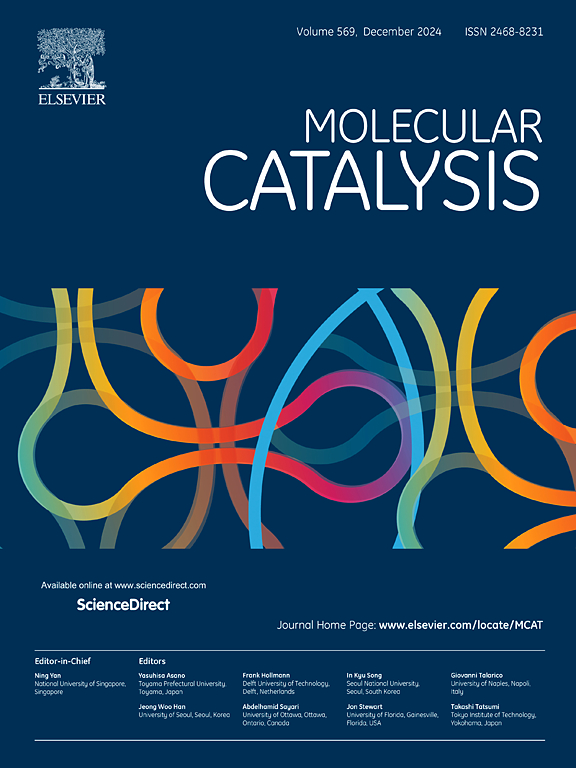CdS quantum dots with sulfur defects for photoreforming plastics into valuable chemicals coupled with hydrogen production
IF 3.9
2区 化学
Q2 CHEMISTRY, PHYSICAL
引用次数: 0
Abstract
Photocatalytic reforming of plastics, involving converting plastics into valuable chemicals while producing hydrogen from water, is a promising green technology with sustainability potential. However, designing catalysts with optimized structures to further enhance efficiency remained a major challenge. In this study, a series of CdS Quantum dots (QDs) with different sulfur defect concentrations were synthesized by a one-step solvothermal method by adjusting the type of sulfur precursors. In the absence of co-catalysts, the optimal CdS-NS photocatalyst achieved reforming of polyethylene terephthalate (PET) into formate with 870 μmol g−1 h−1 and acetate esters with 90 μmol g−1 h−1, while the hydrogen production rate reached 1771 μmol g−1 h−1. EPR spectra and other analyses confirmed the presence of abundant sulfur defects in the prepared CdS QDs and further demonstrated that the concentration of sulfur defects was closely related to photocatalytic performance. Suitable sulfur defects effectively modulated the electronic and band structure of CdS QDs, enhanced the oxidation capacity of photogenerated holes, reduced the recombination rate of charge carriers, and ultimately improved photocatalytic activity. This work provided an effective approach for designing efficient photocatalysts for the high-value recycling of plastic waste to achieve carbon neutrality.

求助全文
约1分钟内获得全文
求助全文
来源期刊

Molecular Catalysis
Chemical Engineering-Process Chemistry and Technology
CiteScore
6.90
自引率
10.90%
发文量
700
审稿时长
40 days
期刊介绍:
Molecular Catalysis publishes full papers that are original, rigorous, and scholarly contributions examining the molecular and atomic aspects of catalytic activation and reaction mechanisms. The fields covered are:
Heterogeneous catalysis including immobilized molecular catalysts
Homogeneous catalysis including organocatalysis, organometallic catalysis and biocatalysis
Photo- and electrochemistry
Theoretical aspects of catalysis analyzed by computational methods
 求助内容:
求助内容: 应助结果提醒方式:
应助结果提醒方式:


